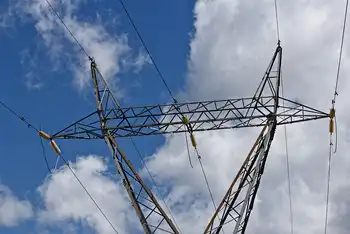GM turns 100 - but is the future electric?
By New York Times
CSA Z463 Electrical Maintenance
Our customized live online or in‑person group training can be delivered to your staff at your location.

- Live Online
- 6 hours Instructor-led
- Group Training Available
The timing of the event is fortuitous, for much more is riding on the Volt than whether a new model using experimental technologies will be a hit. For if the Volt succeeds, it could put the troubled company on a whole new path after 10 decades tethered to the internal-combustion engine. If it fails, it could drag GM, and perhaps the entire struggling American auto industry, even further behind Asian competitors.
It was on Sept. 16, 1908, that William Crapo Durant filed the incorporation papers that formed GM, with a revitalized Buick as its foundation. The centennial should be a time of joy at the company. But, with losses since 2005 approaching $70 billion, and Toyota having accelerated past GM into the No. 1 spot in global auto sales, the companyÂ’s staff wonÂ’t be dancing in party hats.
Instead of toasting the glory days when GM owned half of the United States car and truck market — its share peaked at 51 percent in 1962 amid suggestions that it should be broken up under antitrust laws — GM executives are looking expectantly ahead to November 2010. That’s when the Volt, expected to break cover this week in close to final form, is due to reach customers.
By mobilizing its formidable marketing resources, GM has piqued interest in the Volt. Anticipation is high; when unauthorized photos and surreptitious video footage emerged recently, they spread across the Internet with viral intensity.
The interest goes beyond the usual curiosity about the styling and features of a wholly new model. The public, like industry veterans and seasoned experts, seems to grasp the potential: the Volt could revive DetroitÂ’s fortunes while loosening OPECÂ’s stranglehold.
Burt Rutan, the aerospace visionary whose accomplishments include the Voyager round-the-world aircraft and who is also an electric-car enthusiast, is among the believers. “I expect the Chevy Volt to be both a success and a transportation game-changer,” he said.
Though electric cars were common in the early 20th century, gasoline models had won out by the 1920s. Since then, the concept has surfaced again and again, but never in a car with mass-market appeal. Still, throughout the 20th century GM was developing breakthroughs in electrical systems — coil ignitions, electric starters, computerized powertrains and digital infotainment systems — that mainly ended up advancing its fossil-fueled vehicles.
But at the same time, GM researchers were quietly investigating alternatives to internal combustion. In the 1960s, the research and development staff experimented with fuel cells, hybrids and plug-in electric cars.
By the mid-1990s, GM took a gamble that electric propulsion was ready for public consumption. It leased 1,100 two-seat EV1 commuter cars, based on the Impact electric concept car.
The EV1 was stymied by its short range — sometimes only 50 miles on a charge. And unlike the Volt it had no backup power if the batteries ran down. Yet the EV1 had a devoted following, and lessees protested when GM took back the cars to crush them. GM called the EV1 a $1 billion learning experience.
Those lessons, and recent knowledge gained developing vastly superior lithium-ion batteries, are the VoltÂ’s great enablers. But despite widespread enthusiasm for GMÂ’s brilliant 2007 Volt concept car, there are growing doubts about the VoltÂ’s chances of success.
Some of that uncertainty can be traced to GMÂ’s reluctance to put its cards on the table, potentially ceding a competitive advantage more than two years before the car goes on sale.
But there is also considerable doubt about whether lithium-ion batteries can meet the public’s high expectations for range and durability. It is clear that both Toyota and Honda, which have done lithium-ion research, are taking a wait-and-see approach toward lithium-ion — and may actually be moving to other technologies. (All current hybrid cars use nickel-metal-hydride batteries, an older but hardly ideal technology.)
Finally, there are questions about the cost. GM executives concede that they are revising the price upward. While the company initially hinted at a $30,000 starting price, executives have recently suggested that the Volt might end up in the mid- to high-$40,000 range.
What is not in doubt is that the Volt will be a four-passenger, front-drive compact sedan. But the high-style design of the Volt concept, which captivated crowds at the 2007 Detroit auto show, has given way to a more conventional look that fits without flamboyance into the Chevrolet family. Recent spy photos reveal that the roof has been raised and the window sills altered, presumably to provide a more usable passenger cabin.
GM still stands behind its pledge that the Volt will be able to travel at least 40 miles with no exhaust emissions on a fully charged battery. The sole propulsion source is a 160-horsepower alternating-current motor. The 1.4-liter gas engine runs only when necessary to power a generator, which in turn supplies electrical current to both the battery pack and the drive motor.
The concept had a turbocharged 3-cylinder; the production car will have a naturally aspirated 4-cylinder.
Electric motors, generators and engines are old hat at GM, in contrast to the VoltÂ’s lithium-ion battery pack, a leap into uncharted territory. The 400-pound T-shaped pack provides 16 kilowatt-hours of electricity (equivalent to 21 horsepower for one hour), and is nestled between and behind the seats.
After studying lithium-ion batteries for decades, GM began working last year with two organizations to move them from the lab onto the road. The development partners are Compact Power, a subsidiary of the Korean battery maker LG Chem, and Continental Automotive Systems of Germany, using battery cells designed by A123Systems of Watertown, Mass. GM recently decided which of two competing lithium-ion chemistries it will use and which company will make the batteries, but it has made no public announcement.
The Volt is such a departure from the fossil-fuel age that there are different views on how to categorize it. Mr. Rutan calls it a “proper hybrid” because owners have the option of driving on electricity or on a combination of electricity and gasoline. Most engineers prefer “series hybrid,” which means an electrically driven car that employs a second form of power conversion to supplement the battery’s energy reserve.
GM hopes to distinguish the Volt from ordinary hybrids by labeling it an electric car. Plugging into a standard household socket for six or so hours to charge the batteries, and topping off the 12-gallon gas tank, will provide 400 miles of driving range, GM says.
An electric car that spews no emissions and consumes only a few pennies’ worth of energy commuting to work, while also capable of several hundred miles of range, is the better mousetrap that appeals to green advocates and auto industry pundits alike. The actor Ed Begley Jr., a former EV1 leaseholder who owns a Toyota Prius, said: “I think the Volt’s going to be good for everybody. None of us needs a sledgehammer to install a carpet tack. By that, I mean most trips are short — to and from work, to a restaurant or store.”
Mr. Begley said he and his wife used their Prius for long trips, and an electric car (a 2003 Toyota RAV4 EV) in town.
“The arrival of the Volt and other electric cars will reduce not only America’s dependence on foreign oil, but also the smog I experience every day in L.A.,” he said.
Chris Paine, who wrote and directed the documentary “Who Killed the Electric Car?” concurs. “GM seems motivated and ahead of the competition,” he said. “It’s a cultural shift of huge proportions for a vast auto company to embrace the concept of a car that’s more than an internal-combustion engine.
“Of course, there are huge technical and financial challenges,” he added. Still, “The price of oil and consumer interest in change should make the Volt a success.”
Industry watchers are more cautious in their optimism. Csaba Csere, editor in chief of Car and Driver magazine, said, “The Volt could put GM in the most positive light it’s enjoyed in 30 years, but its success depends on solving two issues: battery durability and cost.”
Mr. Csere (pronounced CHED-uh) noted that lithium-ion batteries had proved successful in laptop computers. “But to serve the car world, they’ll have to last 10 years, versus the typical two- or three-year laptop lifespan.”
Manahem Anderman, president of Advanced Automotive Batteries and an electric-car consultant, is also unconvinced. “Without three or four years to test battery life in both the laboratory and in the field, prudent engineering steps have to be bypassed,” he said. “Lacking long-term data, GM might have to include the cost of a battery replacement in the Volt’s price.”
Mr. Anderman added: “Rushing to deliver 60,000 electric vehicles per year poses a phenomenal risk. The business case for a vehicle with a $10,000 battery is problematic. I predict GM will end up building only a few thousand of them.” He said he did not expect the Volt “to be either a commercial success or a long-term benefit” to GM’s image.
An auto industry analyst, Jim Hall of 2953 Analytics in Birmingham, Mich., takes a more sanguine view. “You’ve got to consider the Volt an investment in new technology,” he said. “As was the case with the Prius, GM won’t earn a profit during the life cycle of the first-generation Volt, but they will gain a foot in the door with this new technology.”
GM has said that its next-generation Saturn Vue hybrid, due in fall 2010, will also receive lithium-ion batteries and be capable of plug-in recharging.
Robert C. Stempel, the former chairman of both General Motors and Energy Conversion Devices, the Michigan company that developed the nickel-metal-hydride battery, relishes what lies ahead. “The Volt has the possibility of being one of the most successful vehicles in GM history,” he said.
While the Volt is on track to be the first quasi-electric car capable of replacing the conventional sedan, there is no guarantee that it will trump the Prius to become the new green-car king.
Mr. Hall said: “If GM were alone in this initiative, the Volt probably would be enough to boost it back to the top of the technological heap. But in Toyota City, there’s a seven-story tower called the Electric Powertrain Building. And Chrysler has a hybrid project called ENVI that’s progressing more quickly than expected. So the best that can be hoped is that the Volt will move GM to the front row of companies with contemporary propulsion technology.”
Maintaining front-row status is the key to a GM that thrives in its second century. David Cole, the chairman of the Center for Automotive Research in Ann Arbor, Mich., put a fine point on what lies ahead. “The plug-in hybrid is the most notable technological advancement of the past 50 years,” he said. “GM’s challenge is making them profitable and continuing to invent a broad range of advanced vehicles.”











